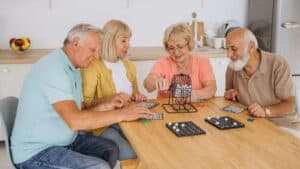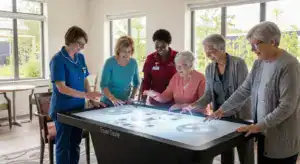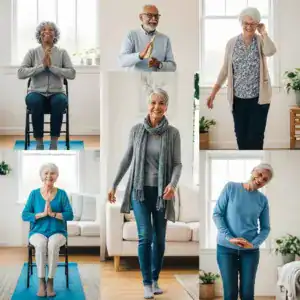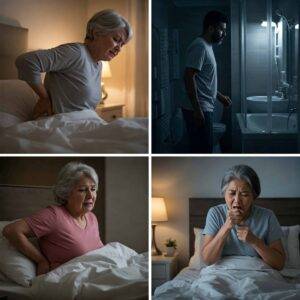
Caring for an aging loved one has its fair share of challenges. One example is their declining physical strength and mobility. If your senior mom or dad lives with you, one thing to prioritize is your home’s safety. Why?
Simple activities like walking across a room or going to the bathroom can become risky as your loved ones age. Accidents can happen at any time. They may slip or fall when you’re not looking, leaving you with overwhelming worry.
That’s why risk prevention is critical. Its main goal is to reduce the possibility of accidents at home. Doing so fosters independence among older family relatives, allowing them to enjoy their golden years with peace of mind.
At Amy’s Eden Senior Care, we know how much safety matters to older people because we’ve helped countless families in this journey. Our approach is rooted in compassion, personalized care, and proactive solutions designed to prevent risks before they arise.
Explore the essentials of risk prevention, including strategies to create safer living environments for older loved ones. Moreover, learn how a holistic approach can enhance not just their safety, but also their quality of life.
Common Risk Factors for Seniors
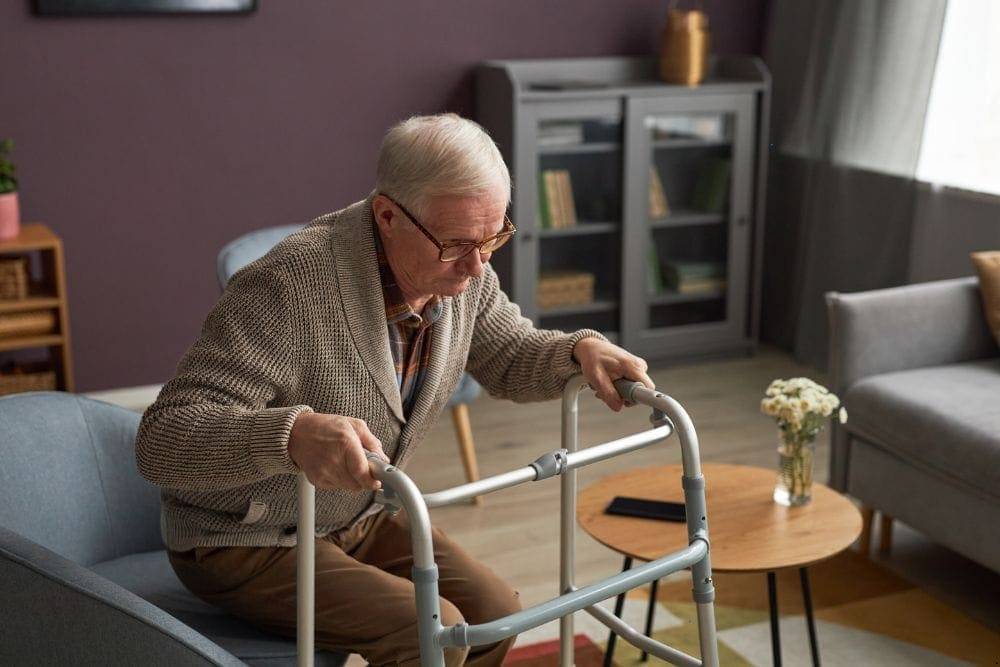
What exactly are considered risk factors for older people? Is your loved one’s home safe enough to give you peace of mind even if they live alone?
Risk factors for senior care refer to physical, environmental, or medical conditions that increase the likelihood of harm. These things can vary widely depending on your loved one’s age, health status, and living situation.
As people age, the risks associated with falls, chronic conditions, and cognitive decline increase. Learning these factors allows one to put together a plan to sidestep these dangers.
1. Falls
Research shows that one in four seniors aged 65 or older falls each year. They’re a leading cause of fatal and nonfatal injuries among the geriatric population. They can lead to fractures, loss of mobility, and extended hospital stays. Preventing these accidents is essential for preserving their independence.
2. Mobility challenges
Physical limitations are a normal part of aging. Reduced strength, balance, or agility makes everyday tasks difficult. For instance, going up and down the stairs can become challenging for your 80-year-old mom. Some could be limping while walking.
3. Environmental hazards
Loose rugs, poor lighting, and cluttered spaces pose dangers. They can lead to slip or balance problems that may result in an emergency. Since most older people want to age at home, their living environments must be adjusted to fit their existing lifestyle.
4. Swallowing difficulties
A host of health conditions can surface in old age, including trouble swallowing. Seniors with Parkinson’s or post-stroke are prone to aspiration, which happens when the food or drink they’re taking goes down the wrong way. It can lead to pneumonia, the fourth most common leading cause of mortality among older people.
Impact on Health and Well-Being
The effects of unaddressed risks go far beyond physical injury. A single fall can diminish a senior’s confidence. Besides that, it can also result in fear of falling, which can mentally limit their willingness to move freely.
For example, fracturing their hip in the bathroom may prompt trauma. They may avoid going to the toilet or feel anxious about entering the shower room because of the fear of falling again. For families, these risks often create stress, guilt, and the spiral of worries and “what ifs.”
Understanding and addressing these home hazards is the first step in ensuring your senior parents stay safe.
Why Is Assessing Risk Important?
Risk assessments are crucial in effective senior care. Research shows that regular fall risk assessments can reduce falls by up to 24%. Therefore, spotting those danger zones within your home is essential. Caregivers and adult children can identify hazards before they become emergencies.
Types of Risk Assessments
There are different methods to evaluate how risky the home is to an older loved one. It commonly includes:
- Fall risk assessment: It involves identifying mobility, balance, and home safety. The Timed Up and Go (TUG) test assesses how easily a senior can move from sitting to standing and walking. How does it work?First, let your loved one sit on a chair. From there, mark a straight line three meters away from where they are. The test is simple. They just have to stand up from the chair and walk to the line then back to where they started and sit back down. When they’re ready, you say “Go.” Older people who take more than 12 seconds to complete this test are prone to falling.
- Nutritional assessment: This type identifies deficiencies or challenges with eating and swallowing.
- Cognitive assessments: This evaluation screens for memory issues or confusion that might lead to wandering or unsafe conditions.
How to Evaluate Risks
Evaluating risks involves a comprehensive review of a senior’s physical health, living environment, and daily routines. Here’s how you can detect potential safety threats and minimize the possibility of injuries or accidents in any setting.
1. Observe mobility and balance
Use tools like the Timed Up and Go to measure how safely and efficiently your loved one can move from one point to another. In most cases, simply observing how they walk can give you an idea if they’re prone to falls.
2. Inspect the home environment
Walk through your or their home and look for safety hazards. Is the yard poorly lit? It can be dangerous if they enjoy walking around the area after dinner. Do they need grab bars in the bathroom? These safety devices can assist in bathing and going in and out of the toilet. Check if there are loose rugs and unkempt cables that can pose harm to your loved one.
3. Monitor nutrition and swallowing difficulty
Seniors who have trouble swallowing may need liquid thickeners or a softer diet to sidestep nutritional deficiencies. One proper positioning tip is to let your loved one sit at a 90-degree angle during meals to minimize aspiration risks.
With these steps, families and caregivers can identify potential risks for their older loved ones. They can then implement targeted solutions to keep their parents safe.
Strategies for Minimizing Risks in Senior Living
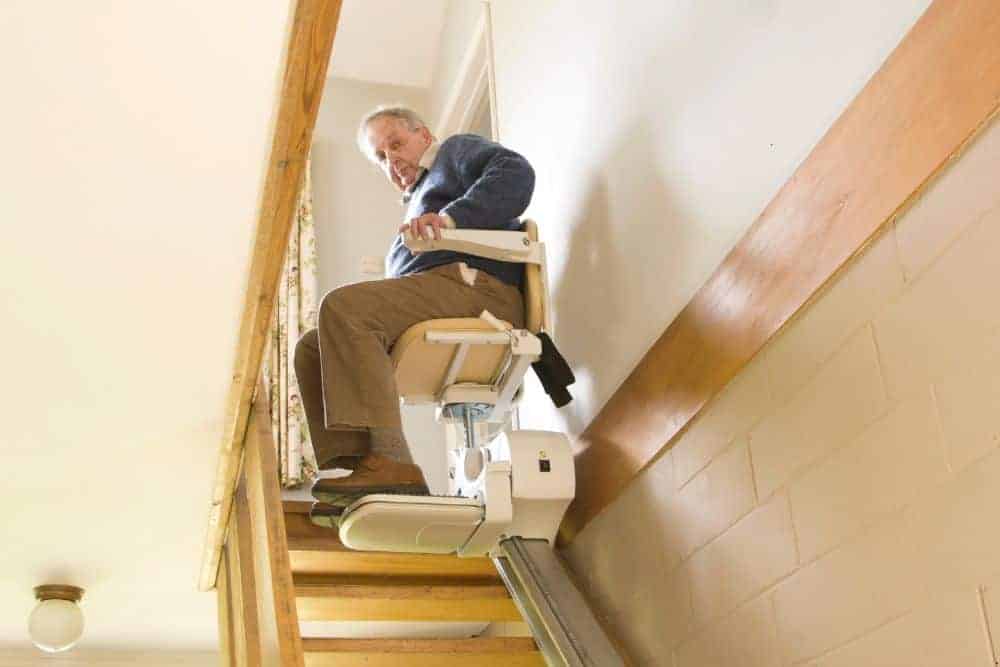
Seniors who live in assisted facilities generally have a safer environment. These homes often hire 24-hour caregivers to assist residents at all times. Furthermore, they curb health complications in countless ways.
- Caregivers prepare highly nutritious meals for residents, promoting food as a natural medicine for the body.
- They can do light housekeeping tasks, like clearing obstructions in the walkway to prevent slips and falls.
- They can support safe mobility. One example is helping your loved one sit upright before standing to reduce dizziness and falls.
- They utilize technology like bed sensors that give alerts when your loved one tries to stand up unassisted.
- They encourage your loved one to engage in physical activity to maintain strength and balance.
Caregivers in assisted homes like Amy’s Eden Senior Care work closely with families to mitigate health risks. They do so by combining personalized care with practical solutions tailored to individual needs.
Safety Measures in the Physical Environment
Transforming living spaces into safer environments can prevent various incidents. Here are some areas and tips you or your caregiver can consider to promote safety at home.
1. Bathroom
Install grab bars in showers and toilets to prevent home accidents. Falls are the second leading cause of death among older people. Roughly 684,000 people die because of them. Grab bars are an inexpensive addition to protect your loved one. They’re best complemented with textured bath mats to ensure stability on wet surfaces.
2. Pathway
Things on the floor when stepped on can make your senior parents lose their balance. A cluttered walkway can turn their lives into a nightmare of hospital readmissions. The floors must be cleared of any obstructions.
Place furniture on the sides or corners, ensuring they don’t hinder the path. Additionally, secure loose cables to make the home navigable for an older person. You can always hire a caregiver if your loved one struggles with their home’s upkeep.
3. Bedroom
Besides the bathroom, the bedroom can also pose risks to your loved one. How can you make it safer? Simplify the decorations to make them less visually and mentally stimulating. Get rid of unnecessary furniture or decorations to reduce confusion, especially if your loved one has dementia. In addition, the space should be well-lit for easy navigation. Install bright but non-glare light.
Risk Reduction Techniques
Implementing effective techniques can reduce health risks. Additionally, they promote overall safety for older family members. Here are some tips.
- Proper positioning: Maintaining the right posture when sitting, lying down, or transitioning between positions can prevent discomfort, aspiration, and strain.
- Mobility aids: Using walkers, canes, or other assistive devices can enhance stability and prevent falls during movement.
- Environmental adjustments: Ensure furniture is at an appropriate height, pathways are clear of clutter, and grab bars are installed where needed.
- Activity pacing: Encourage your loved one to take their time when transitioning from sitting to standing to avoid dizziness or falls. According to an estimation, about 20% of people over 65 experience a drop in their blood pressure, causing lightheadedness when they suddenly stand up from sitting down. It’s rarely a cause of concern but check with your doctor if it happens too often or doesn’t resolve quickly.
- Regular monitoring: Assisted homes use monitoring systems or personal alarms to alert caregivers if a senior is at risk or attempts to move without assistance. These tools help notify when a caregiver’s support is needed.
These techniques, along with our attentive caregiving, can make your home senior-friendly. Additionally, caregivers can assist your loved one so they can maintain their independence.
Financial Considerations in Senior Care

Accidents that occur at home often result in hospital admission and financial burden to families. Renovating your private space doesn’t only protect your older loved ones but also your finances.
Financial Risks in Senior Care
Medical emergencies, hospitalizations, and long-term care stress many families. An unexpected fall can spiral into costly hospital stays, rehabilitation services, or permanent facility care, which insurance companies may not cover.
Did you know that non-medical at-home services can cost from $31 to $34 per hour? This number shoots up to $38 to $42 per hour if your loved one lives in an assisted home. Care expenses financially pressure families and deplete their savings.
Many adult children of seniors also face financial strain from reduced work hours or career sacrifices as they take on caregiving responsibilities. These unexpected costs can snowball, leaving families struggling with their finances for years.
Role of Insurance Companies
Insurance providers can help families manage the high care costs, but coverage varies broadly. Medicare and Medicaid cover some medical expenses, though benefits are often limited.
Long-term care insurance can fill the gaps by covering assisted living services. Many policies also offer benefits for preventive measures. One example is the installation of fall detection systems. Families should review plans carefully and seek advice to ensure they maximize coverage and avoid unexpected out-of-pocket expenses.
Reducing Financial Risks
When it comes to minimizing the financial risks associated with your loved one’s care, proactive planning is key. Families should explore long-term care insurance early, as premiums are lower when purchased at a younger age.
If you’re a family caregiver, look into community resources, such as grants or subsidies for home modifications. Although minimal, these extra dollars offset some upfront care costs. For instance, you can use the obtained funds to install grab bars or ramps to renovate the home.
Budgeting for potential caregiving needs, such as part-time home assistance, can prevent sudden economic strain. Additionally, leverage tax credits and deductions available for caregivers, such as the dependent care credit. Families can better balance their care expenditures and own financial security if they know and plan for them.
Collaboration and Education in Risk Prevention
Your loved one’s safety doesn’t rest on your hands alone. Collaborative care is critical in ensuring they’re safe and their environment supports their lifestyle. There are two ways to promote this.
Working Closely With the Care Team
Preventing risks is a team effort involving healthcare providers, caregivers, and families. Communication is key to ensuring everyone understands and fulfills their role in care. For example, adult children can share care responsibilities among themselves to reduce the burden on the primary family caregiver.
Educating Seniors and Their Families
Awareness is a powerful tool in senior care risk prevention, promoting overall well-being. Educating older people about safe mobility practices can empower them to move confidently and reduce the likelihood of falls or injuries.
Similarly, teaching them the importance of hydration and proper nutrition guarantees they maintain their strength, energy, and immune health as their body ages. Raising awareness about the risks of certain behaviors, such as rushing out of bed or skipping meals, minimizes accidents and health issues.
When you and your loved ones are aware of the pros and cons associated with senior care, it’s easier to foster a team care approach. In addition, it can help encourage informed decision-making and proactive care strategies.
Organizational Safety Initiatives
Amy’s Eden Senior Care homes implement improvement measures to stay at the forefront of risk prevention. We combine advanced tools and compassionate care, taking a holistic approach to caring for your loved one.
Unlike other facilities, our model is uniquely designed to prevent falls more effectively, thanks to our caregivers who are always on-site and ready to intervene when necessary. Our team undergoes rigorous training to address hazards proactively, creating a safer environment for older people to live in.
Additionally, we utilize technology such as alert systems, ensuring prompt assistance at critical times. Pairing this with our hands-on approach allows us to consistently deliver superior outcomes in fall prevention. At AESC, we aim to foster peace of mind for seniors and their families because we know just how important it is.
Preventive Measures for Specific Health Conditions
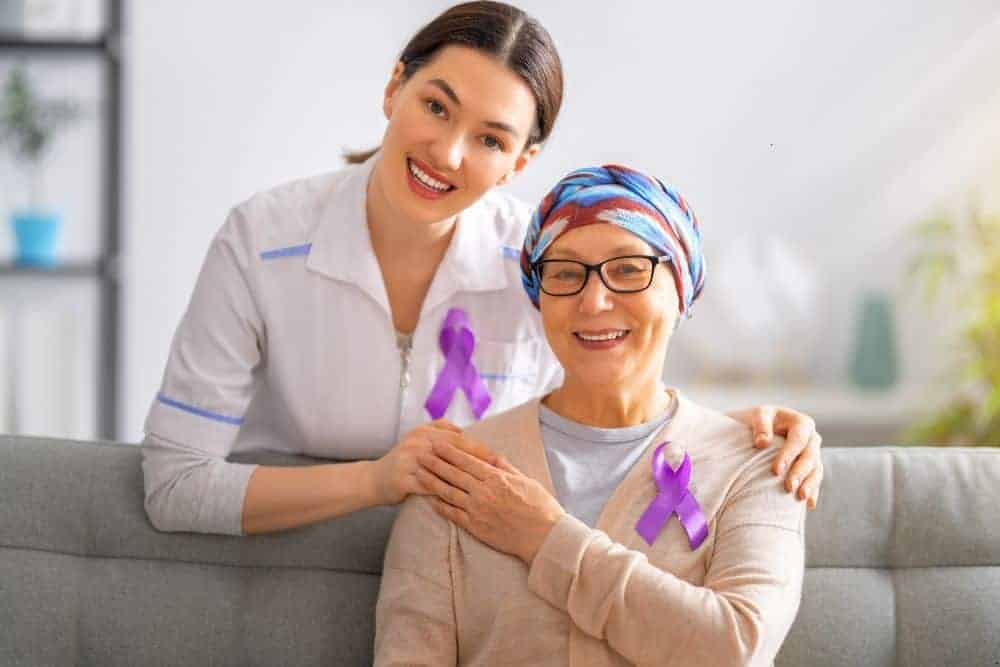
As seniors age, their risk for certain health conditions increases. However, the right measures can significantly reduce these risks. From regular medical screenings to lifestyle adjustments, a preventive approach can help your loved one maintain their health and independence.
Here are some tips to help your loved one focus on prevention and long-term health.
Cancer Prevention
Cancer affects about two million Americans, ultimately requiring palliative care. Breast cancer and prostate cancer are the leading diagnoses for women and men, respectively.
Many cancer cases are genetic. Encourage your senior mom or dad to screen regularly for risks if the disease runs in the family. On top of that, a diet rich in antioxidants may help them sidestep cancer. Antioxidants neutralize free radicals that prompt inflammation, leading to declining health.
Physical exercise is as important as diet in reducing cancer tendencies. Research shows that moving can reduce lung, breast, colon, and other types of cancer.
Managing Chronic Diseases
Chronic conditions like diabetes and heart disease are also prevalent in older adults. They require careful and consistent management to prevent complications. Some of the key strategies to decrease the risk of these long-term illnesses include the following.
- Dietary adjustments: Ensure your loved one consumes wholesome meals with appropriate portions.
- Regular monitoring: Check their blood sugar or blood pressure levels to catch potential issues early. Fluctuating volumes can signal health anomalies.
- Medication management: Ensure prescriptions are taken on time and as directed. Use pill organizers or automated reminders to prevent missed doses.
- Physical activity: Moderate exercises, like walking or yoga, can improve circulation, manage weight, and enhance their overall health. Any type of movement preserves their mobility.
- Routine checkups: Schedule regular visits with your family doctor providers to assess their health progress or decline and adjust treatment plans.
You can help manage your loved one’s chronic conditions even without any caregiving background. The internet has abundant resources and caregiving training that you can explore to understand your loved one’s health situation.
If you need a backup, hire a trained caregiver to assist your loved one from managing their medications to monitoring their symptoms.
Addressing Key Factors In Preventing Risks
Every senior has their own unique needs and preferences, which is why risk prevention requires a personalized approach. At Amy’s Eden Senior Care, we work closely with families to assess individual risks such as fall history, medication side effects, or mobility issues. Doing so allows us to implement tailored strategies for each of our residents.
For example, motion-activated lighting may help someone with nighttime disorientation. Meanwhile, balance exercises and assistive devices can reduce falls for those with mobility concerns.
We also prioritize emotional well-being by devising care plans that promote independence, cognitive stimulation, and social engagement. This senior-centered approach gives families peace of mind.
Taking a Holistic Approach to Preventing Risks
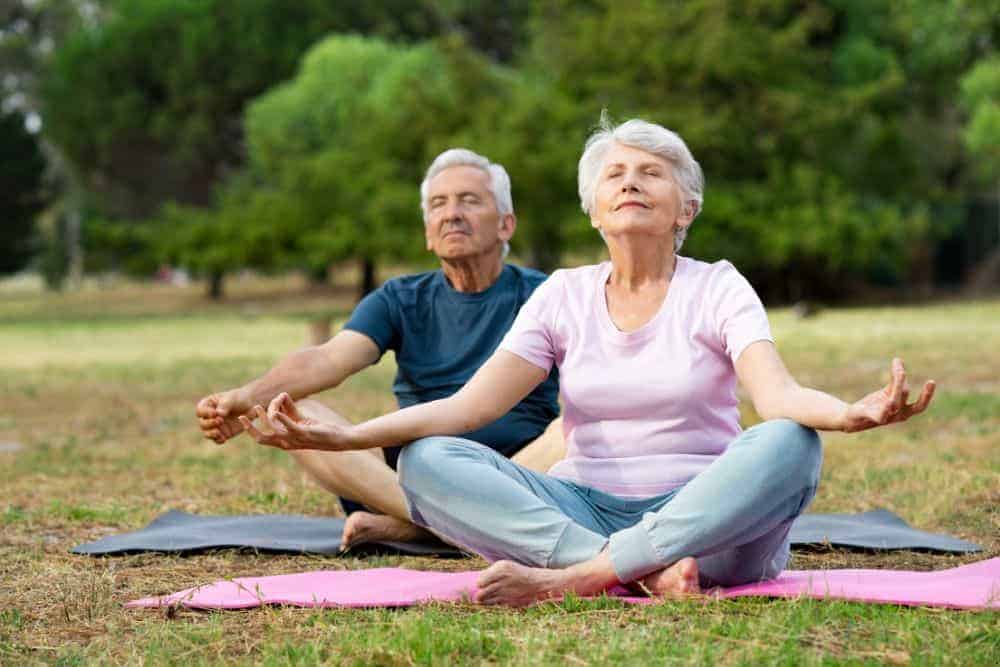
Looking at safety risks more comprehensively considers your loved one’s physical, emotional, and environmental needs. Such a strategy ensures they are safe and thriving in any place they call home.
Assessing Individual Risk Factors
Each senior faces unique safety challenges that require individualized solutions. For example, if your loved one loves gardening but struggles to bend safely, raised garden beds can help solve the issue. Walkers, canes, and similar devices allow those with balance concerns to stay active.
Importance of a Holistic Approach
A holistic approach doesn’t just prioritize physical safety but also emotional and mental well-being. For instance, a senior who has fallen once may develop a fear of falling again. It can trigger psychological consequences, leading to social isolation and reduced physical activity. Encouraging regular social interactions, light exercises, and confidence-building activities can prevent this downward spiral.
All health outcomes have emotional, psychological and physical aspects. Therefore, care solutions often intersect many health domains. For example, if your parents are prone to falling, combining traditional treatment with exercise, good nutrition and therapy can help address the root cause.
You can better improve your loved one’s safety and quality of life by looking at the bigger picture rather than the isolated risks.
Utilizing Prevention Programs
Prevention strategies are a critical part of holistic care. Some of the programs your loved one can explore to mitigate safety risks include:
- Fall prevention workshops: These programs teach them types of exercises to improve balance and strength, like gentle yoga or tai chi. They’re enjoyable and boost their social skills.
- Cognitive activities: If they’re at risk of cognitive decline, engaging in puzzles, memory games, or group discussions can keep their minds active and sharp. They can also reduce confusion or forgetfulness.
- Caregiver education sessions: As a family caregiver, you can learn risk prevention techniques, such as proper lifting by participating in caregiving training. You can promote safe mobility with this knowledge.
At Amy’s Eden Senior Care, we’re committed to providing care that addresses every aspect of senior’s well-being, ensuring they and their families feel supported every step of the way.
Include Risk Prevention as Part of Holistic Care
Risk management isn’t just about addressing the hazards but also proactively preventing them. How? It begins with understanding the common risk factors. When you know the things that put your loved one in harm’s way, you can implement tailored prevention strategies. From this, every right step you take contributes to a safer, more supportive environment for those you hold dear.
Amy’s Eden Senior Care embraces holistic care in our homes. Our hardworking caregivers don’t just protect your loved one’s physical well-being but also their other health needs. Doing this allows us to foster a life filled with purpose and connection within our assisted homes.
Don’t wait for risks to turn into emergencies. Build a safer environment for your loved one. If their residence can’t support aging at home, move to one of our homes in Nevada. Schedule a consultation to learn how we can help your senior loved one thrive and enjoy their golden years without worries.

